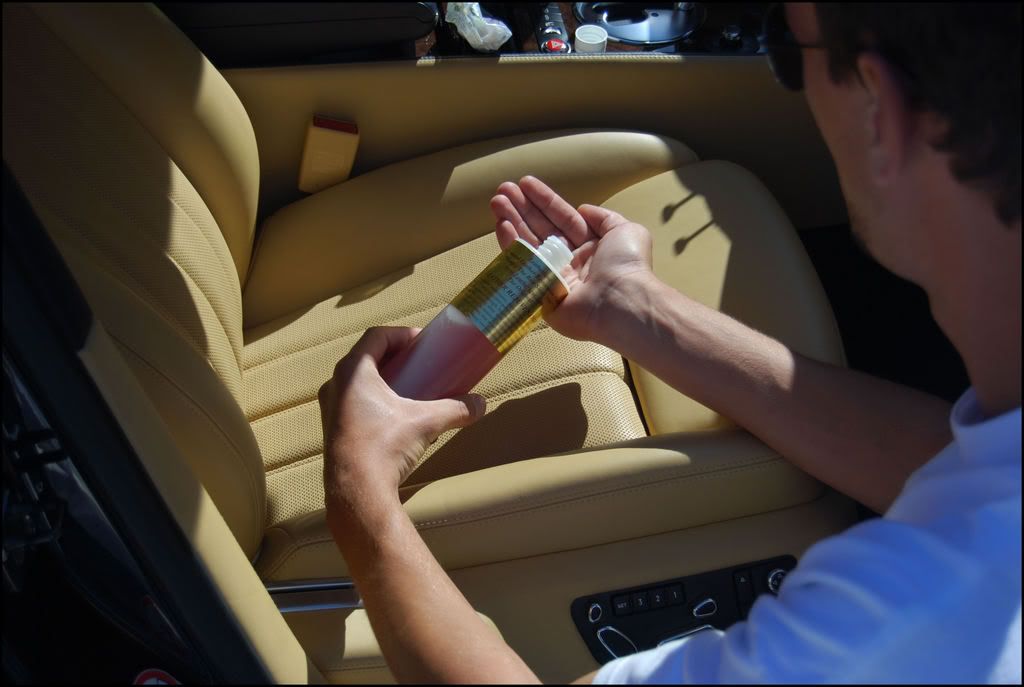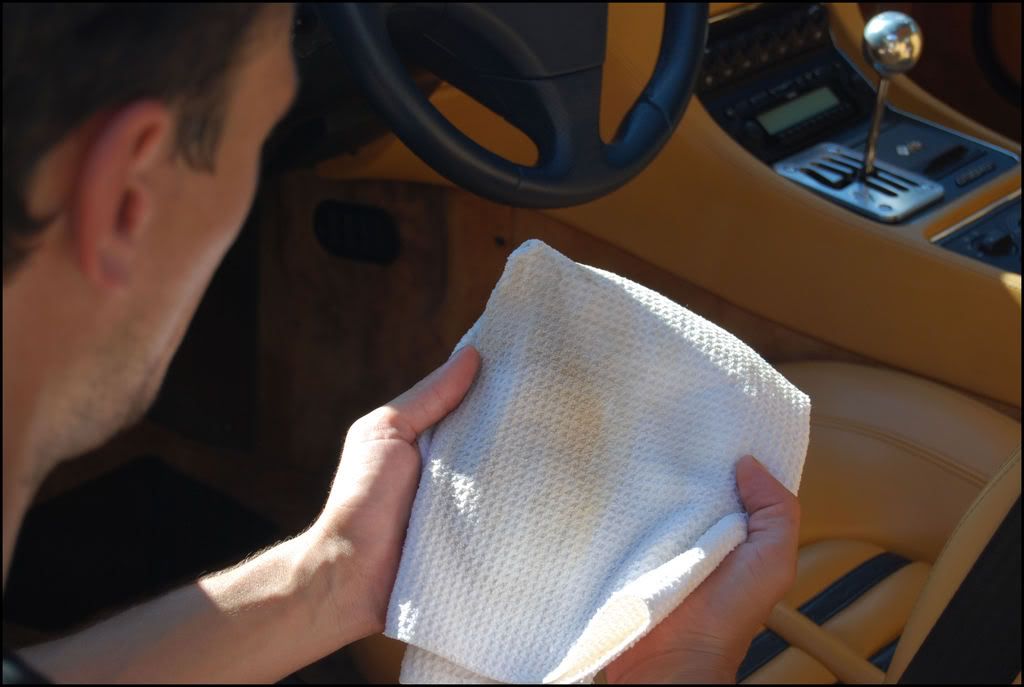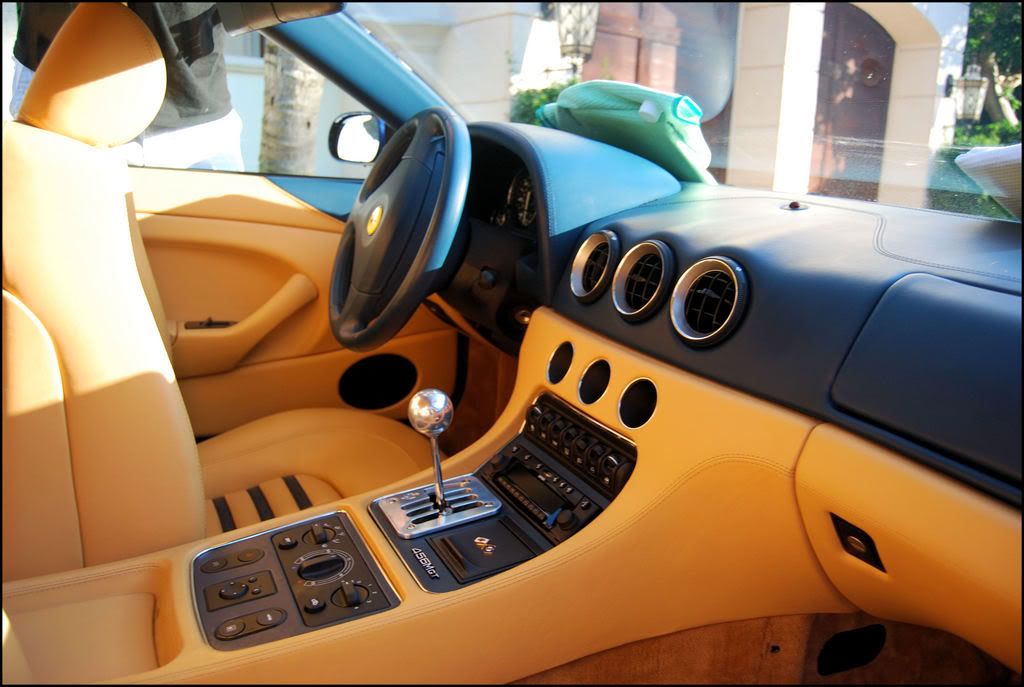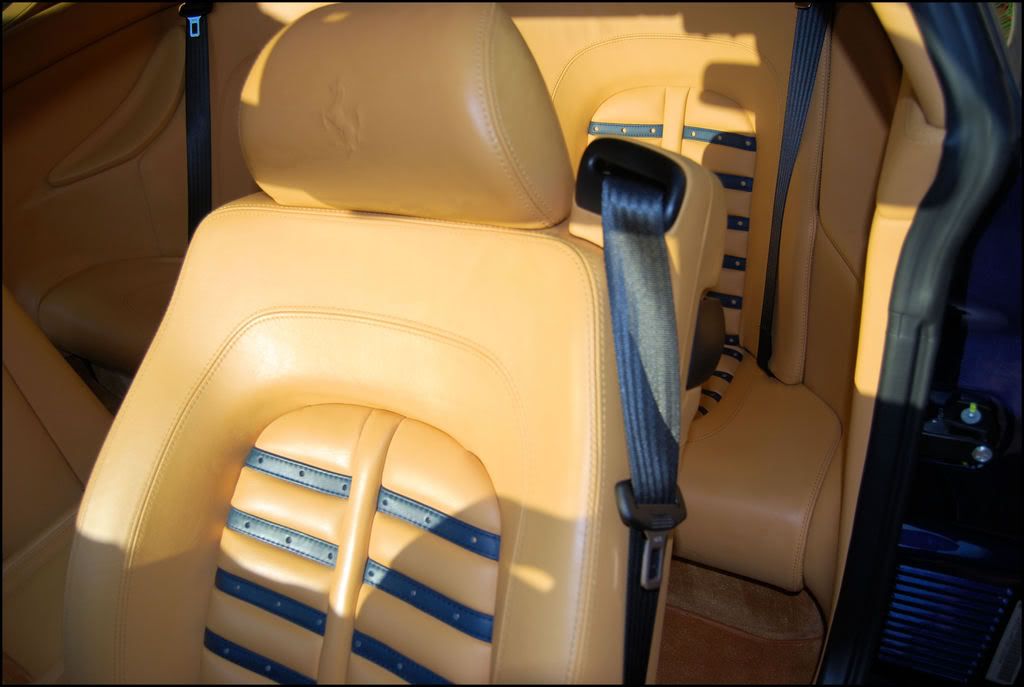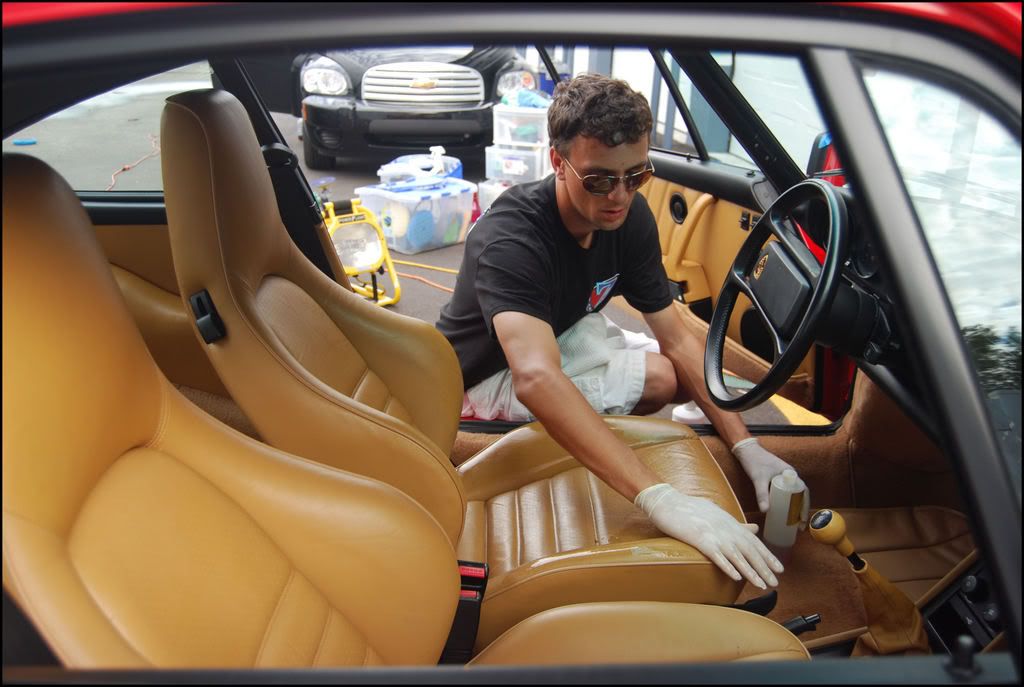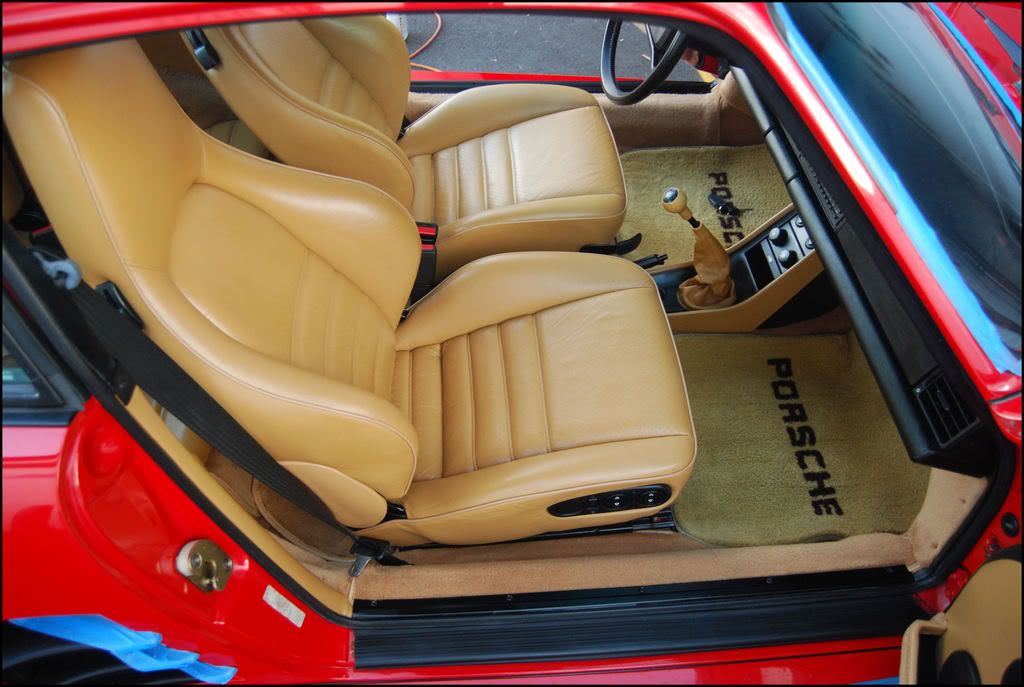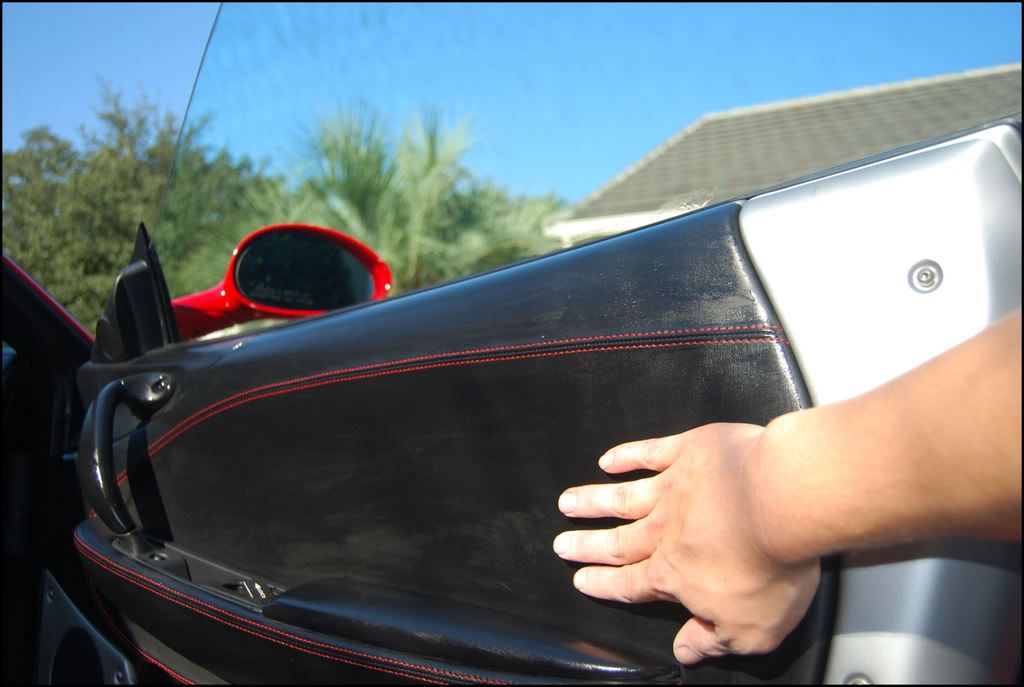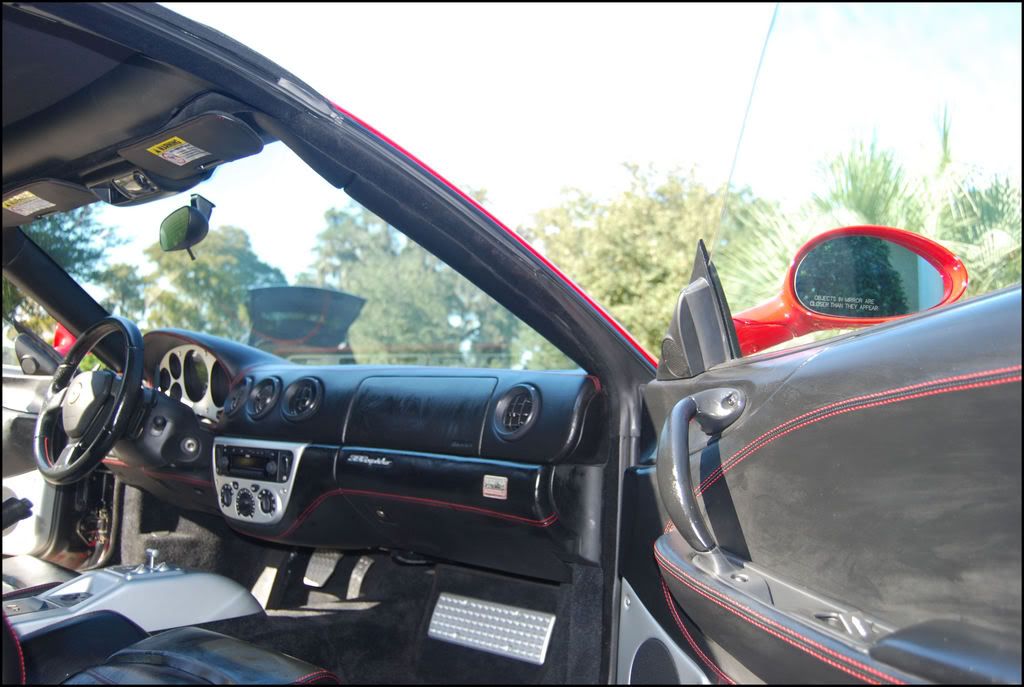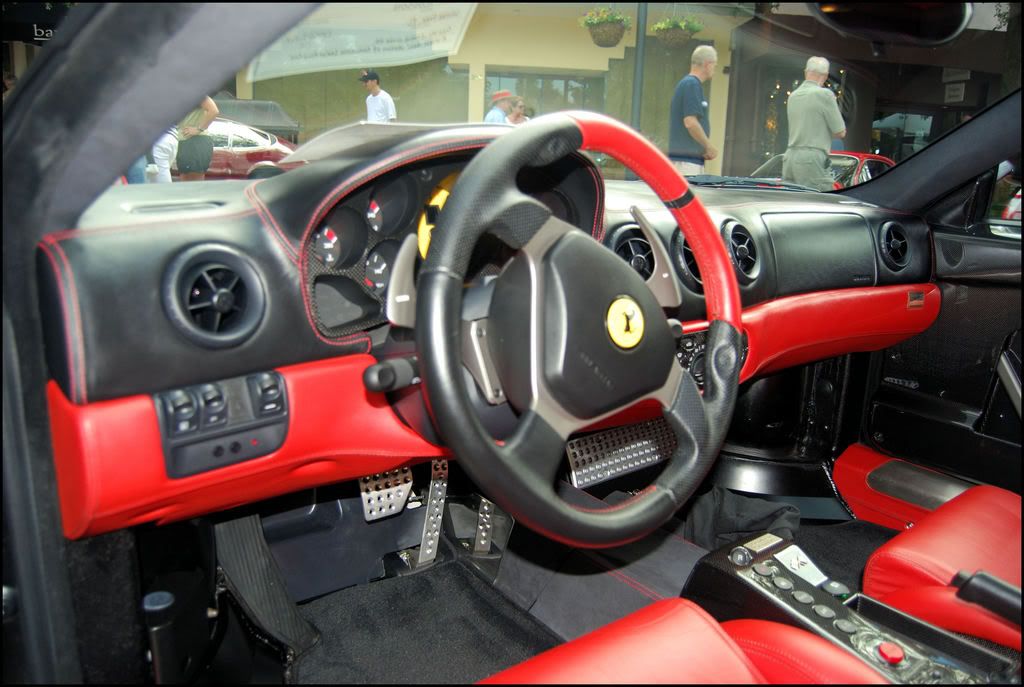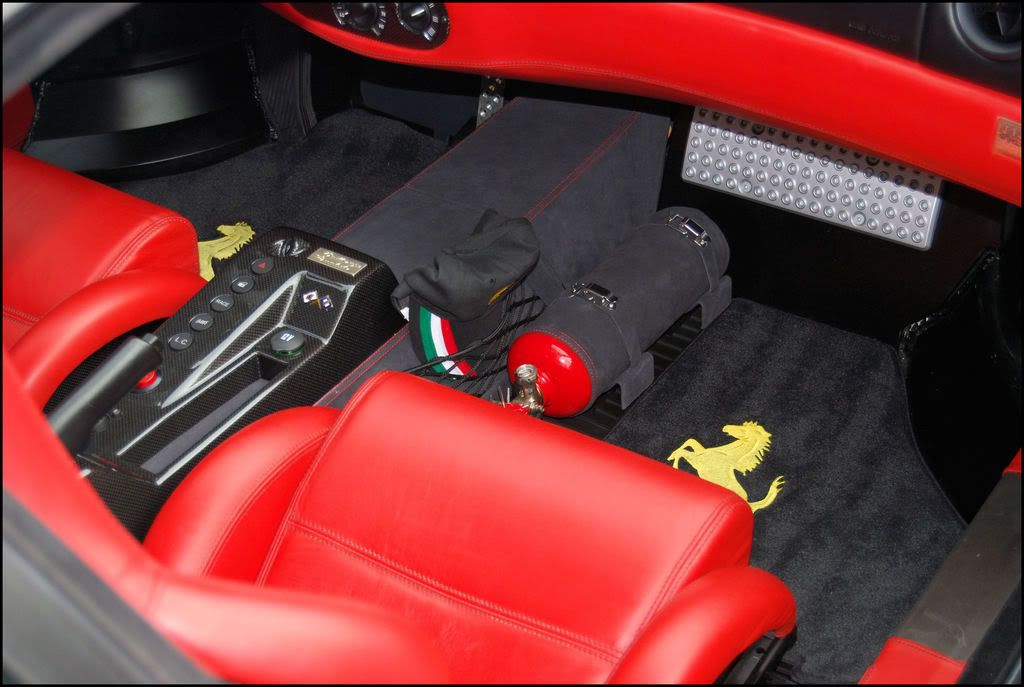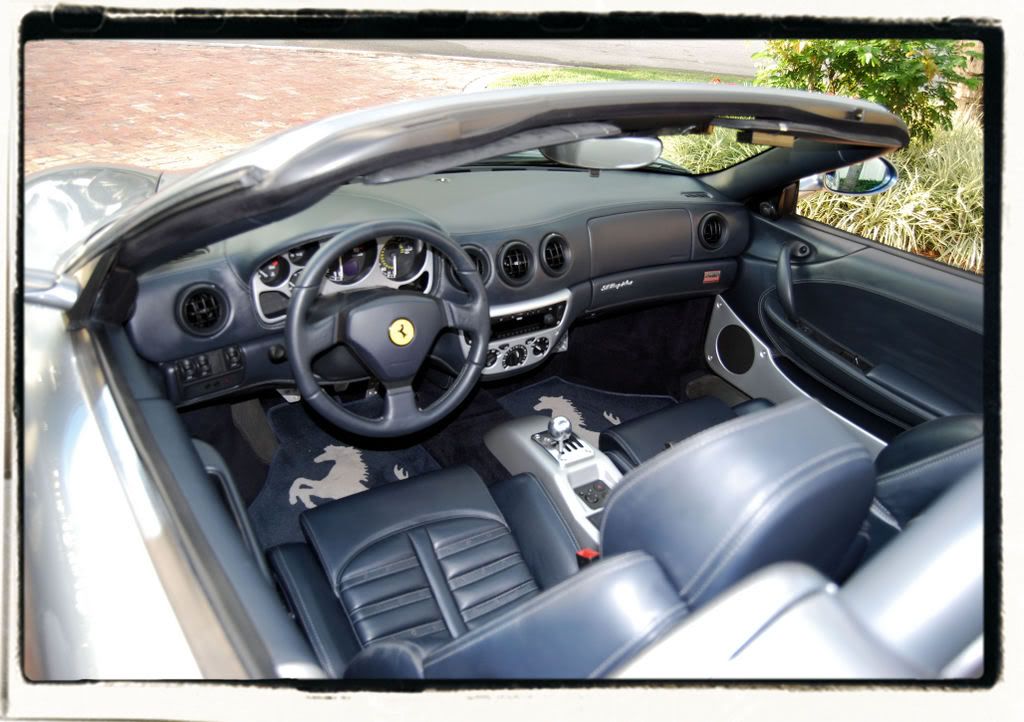Todd@RUPES
New member
- Dec 23, 2007
- 409
- 0
Manufacturers Claims (copy and pasted from Leatherique.com)
REJUVINATOR OIL - Known world wide for its ability to soften even cardboard hard leather. It is a complex blend of animal proteins, collagens, with absolutely no oil fillers of any kind. Totally unlike all other leather products, it will not stain or discolor leather. It is perfectly safe for equestrian use! Simply spray or wipe onto the surface and massage into the leather with your hands. Allow for it be absorbed into the fibers. Rejuvenator Oil has a unique capillary action which forces proteins into the leather and dirt out! Repeated use will keep leather in tip top shape. Use to condition and preserve all your leather cars, saddles, tack, furniture, motorcycle leather and even apparel. Prestine Clean is the perfect cleaner to use after each application of Rejuvenator Oil to remove the displaced impurities on the
surface of the leather.
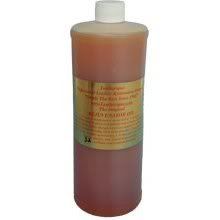
PRESTINE CLEAN - Absolutely the best cleaner available for all fine leather. Does not contain any harsh chemicals to dry and destroy fine leathers. Contains a conditioner which cleans and conditions leather, but to a lesser extent than our Rejuvenator Oil. Use to clean leather after the application of Rejuvenator Oil has done its job and as maintenance cleaner and detailer on an as needed basis. This product is also an excellent cleaner and conditioner for vinyl and rubber. Use Prestine Clean every time you wash your car.
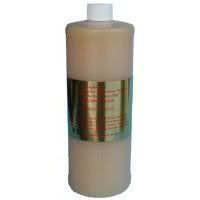
Leatherique is a unique (compared to what I am used to) way to not clean leather, but it also softens the feel of the hide as well as restores the softness/feel. It is a two part system that works backwards to convention. After vacuuming the leather and making sure all the grime and particle build-up is removed, the conditioner ( Rejuvenator Oil) is hand applied and massaged into the leather. The directions recommend allowing the interior to get warm (either by sitting in the sun, using a trash-bag and hairdryer, or running the car/heater) and allow the conditioner to "steam". After allowing the several hours (the longer the better), the excess conditioner and grime (that floated out of the seats) is wiped away with the cleaner (Prestine Clean). This is supposed to ensure that the hides are fully conditioned and cleaned from the inside-out.
Initial Impression- I first tried the Leatherique System because I was having a hard time getting the leather clean on a car I was preparing for the Ferrari Cavallino Concours Show in West Palm Beach, Florida. Using spray cleaners (Duragloss Leather Cleaner, Meguiars Gold Glass, Lexol Leather Clean, Zaino Z9) didn't have much cleaning ability, unless I scrubbed with a firm bristled brush. Even then this was a slow and tedious job, but more importantly I was also getting some dye transfer on the towel.
I called Brian (VASuperShine) and he had expressed that I need to try the Leatherique System (how it was gentle and floated dirt out, deeply reconditioned the seats, blah, blah..). When I next prepared the Ferrari, I had Brian along and apply the Leatherique to the interior.
Honestly, I was not expecting much. I was blow away. Not only did it remove all of the grim (easily) but it restored the original, Ferrari smell! (I should say that Leatherique is not scented like leather, and smells quite horrible). The leather was amazingly soft, and felt like butter. I was beyond impressed.
Here is a link to the detail of the said Ferrari. Brian can be seen applying leatherique about half way down (There is about 160 pictures on the thread, so it’s a long read).
The Road to Cavallino: Updated 10/21 (127 PICS) - Autopia Car Detailing Forum
Since then, I have been using leatherique faithfully and often enough to give a review and share a small write up and some tricks.
PROS: Easily and safely removes the worst of grime and grease from the hides. Restores leather better than anything I have ever used. Restores feel, smell, texture, appearance. Really does seem to work from the inside out. Relative time spent is rather small.
CONS: Long dwell time. Requires at least 6 hours (in my experience) for full cleaning. Liberal amounts are applied of the both the cleaner and conditioner, so the product cost is pretty high. Can be pretty messy.
OVERALL: Simply a mind blowing product. The cost is high and the product takes for over to work (because it works better than anything else) but I am a pro, so I can charge for this. Every time I use it, I get excited because it never fails to impress. If you are an enthusiast looking for the best, then I think I have found it. If you are a pro, then you have something to step up your game with (and charge for, of course).
Tricks:
You can wear latex gloves when applying the oil. Not only does this keep your hands clean (the conditioner is a little tacky) but it also gives you a good base when you need to add more. The product will spread and work quickly, but will thin quickly, and when the gloves "stick" to the leather, its time for more oil.
Apply both the oil and prestine clean by spraying on. This really eases the application of the oil and cleaning of it. It is much easier to apply the products with out having to pour it into your hands (and spill) and wipe it quickly. Buy some sprayers at Wal-Mart and thank me later!
Allow to dwell for as long as possible in as much heat for as long as possible. The longer the oil sits the easier it comes off. The warmer the climate inside the interior, the better the oil works and easier it comes off.
If it’s difficult to remove (it can be try the following)... Apply more prestine clean (I use the sprayer) and wipe with a clean cloth. Sometimes you have to use a lot of it. If it’s still difficult to remove, try heating the interior (pull it in the sun, turn on the engine and heater, or wipe with a hot rag). I have found the longer I can let it dwell and the warmer the interior temperature is while its dwelling have a SERIOUS impact on the ease of removal.
A quick write up.
I am working on this 1994 Trans Am 25th Anniversary. This car is rough (for those who say I am spoiled too much ) with mold on the outside (it has sat out for the last 5 years) and a disgusting white leather interior.
) with mold on the outside (it has sat out for the last 5 years) and a disgusting white leather interior.
When I first moved the car (the owner has left it my house for the last couple weeks as I have been busy and am working on it on spare time), I noticed how nasty the interior was, and I knew the first thing I would grab for was the leatherique. The seats where dry as cardboard and smelled funky (the mildewy old car smell).
I don't know how well the pictures came out, but the difference has been dramatic.
Here is a before of the passenger seat...

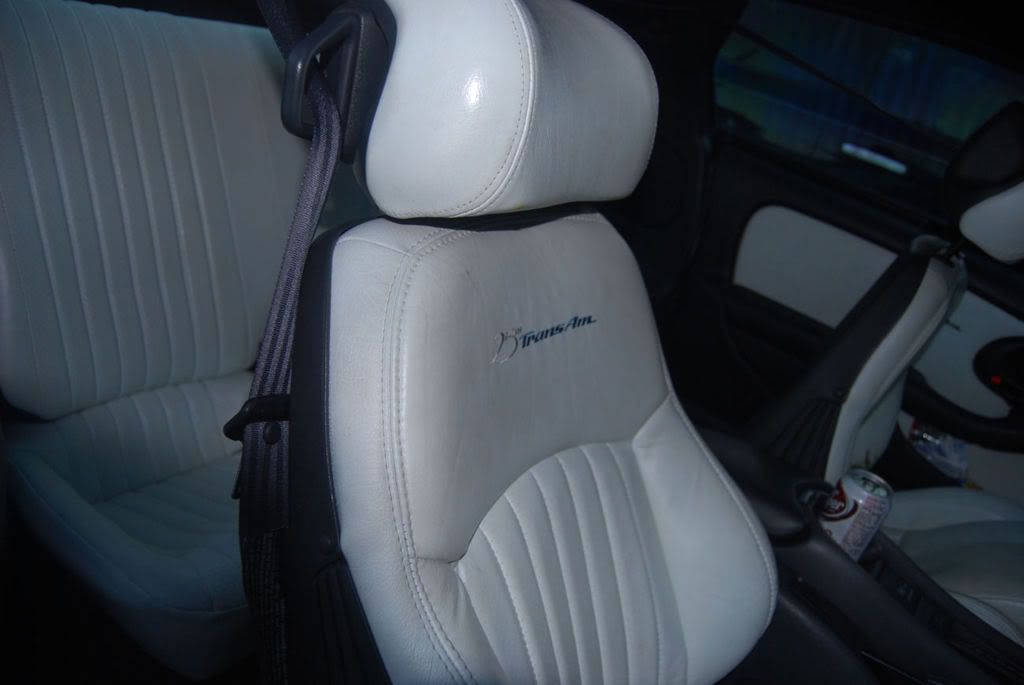
Here is the rear seat after being wiped with Prestine Clean.

Afters of the passenger seat (Leatherique was allowed to dwell for 5 hours in the sun, at about 85 degrees out).
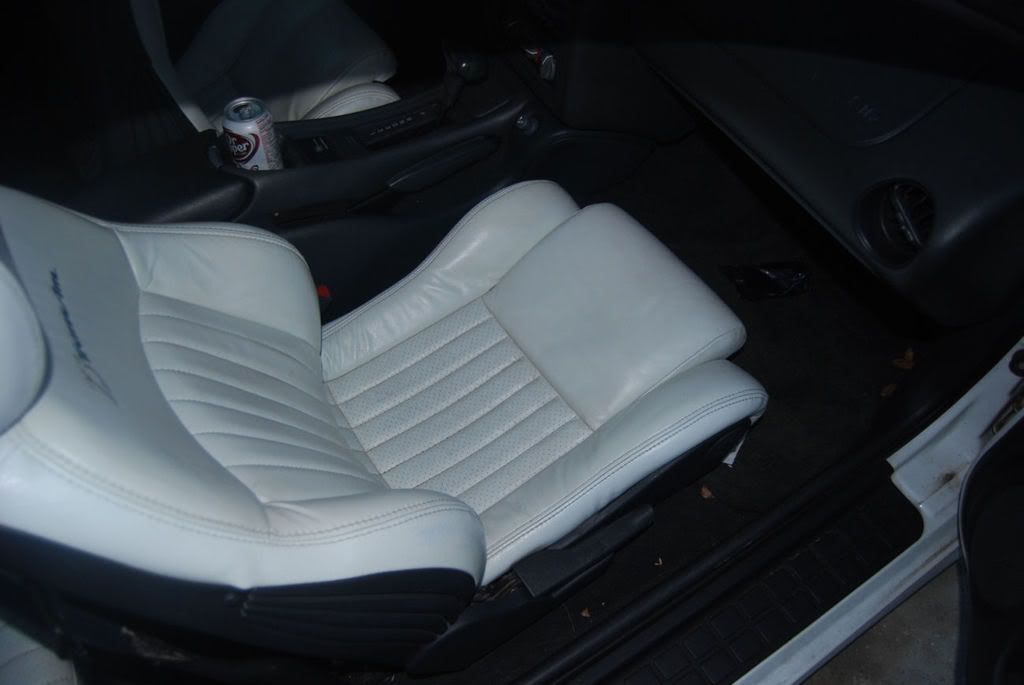
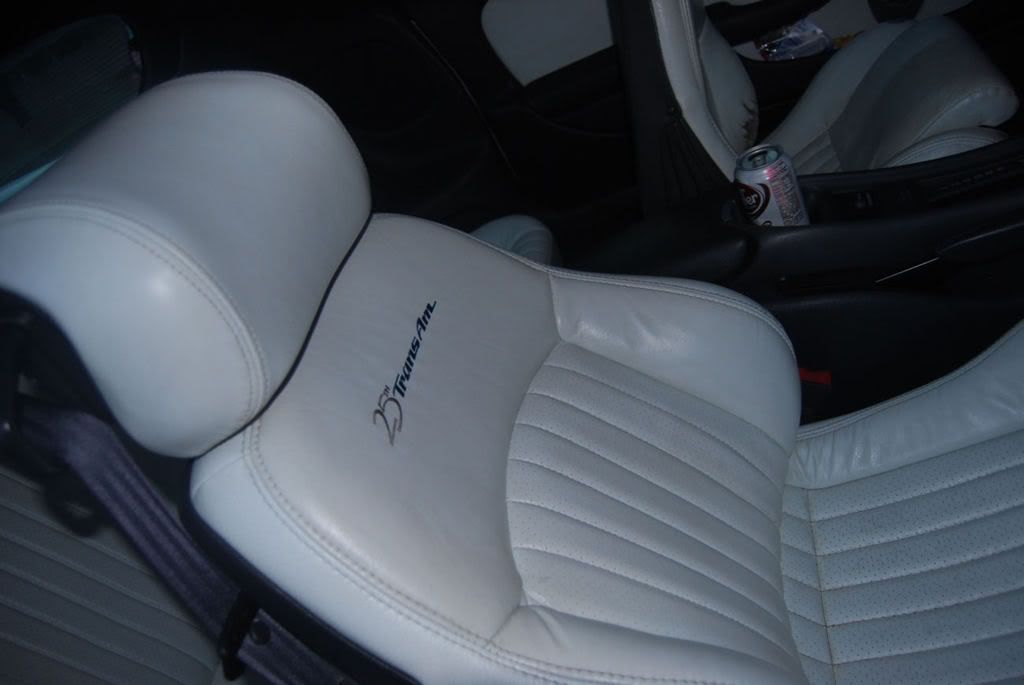
Here are a couple half and halfs of the drivers seat..

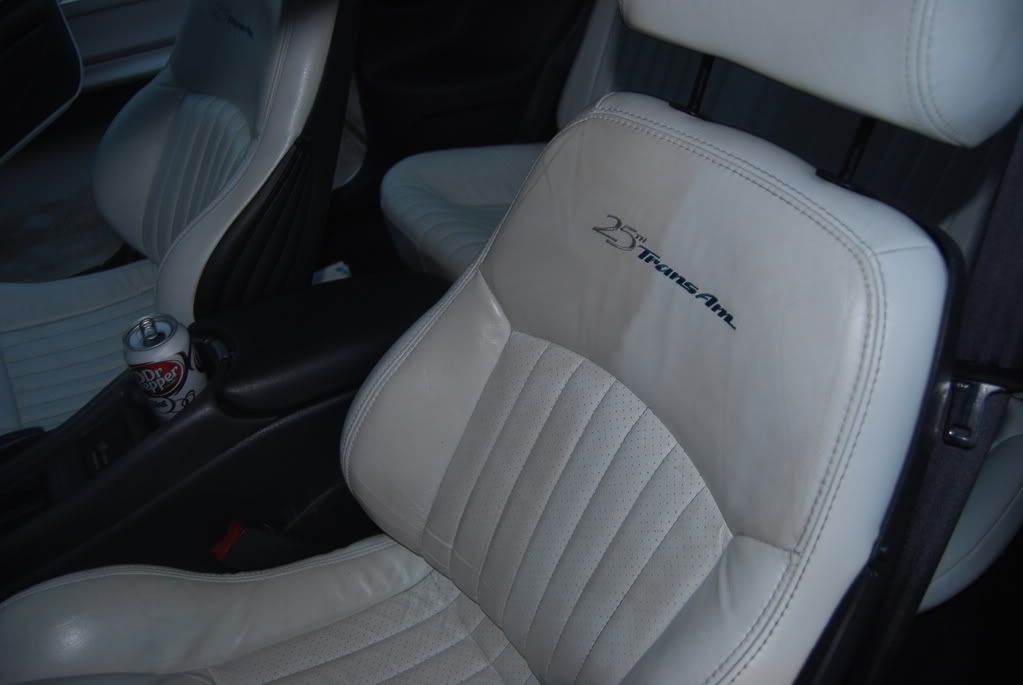
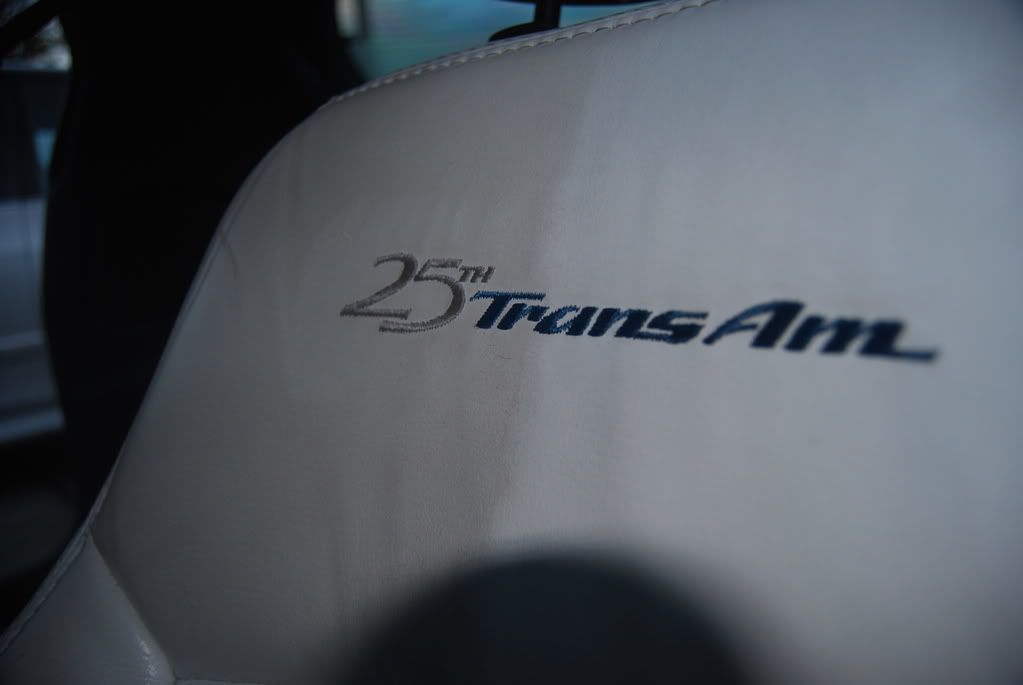
I had noticed that while most of the dirt was removed (easily) the seats still felt a little dry and there where some spots that needed a second application. I applied the second coat of Rejuvenator Oil early the next morning and left the Trans Am in the sun the entire day. Not only are the seats and leather amazingly soft and supple, but the smell in the car (the next day) is beyond amazing. Also, all the dirt and grime came off (and out from the inside). It is truely a transformation!


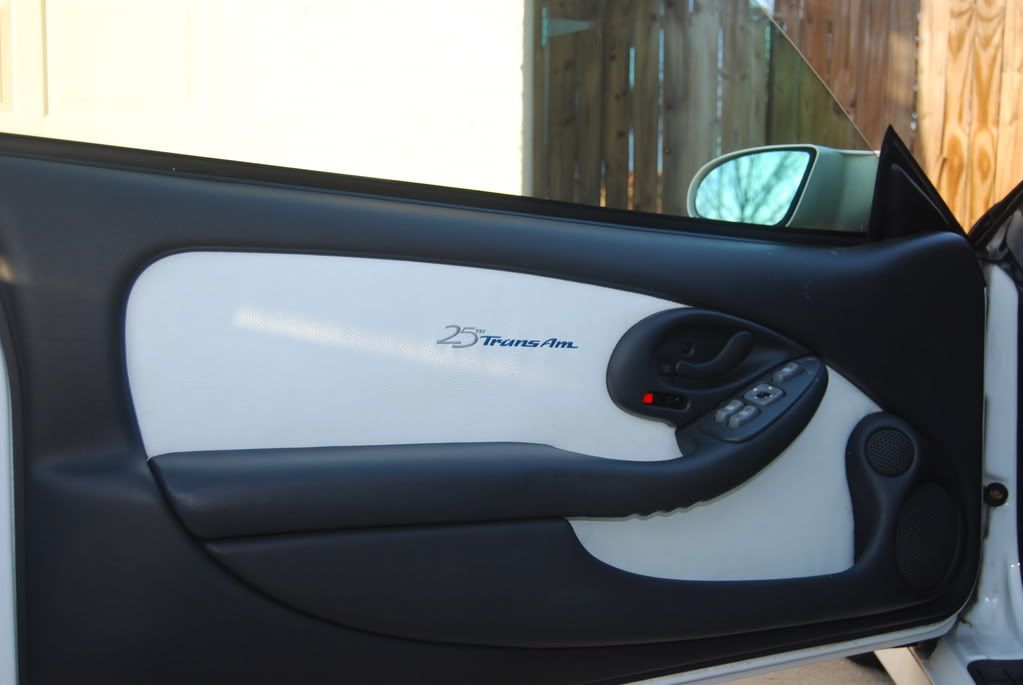
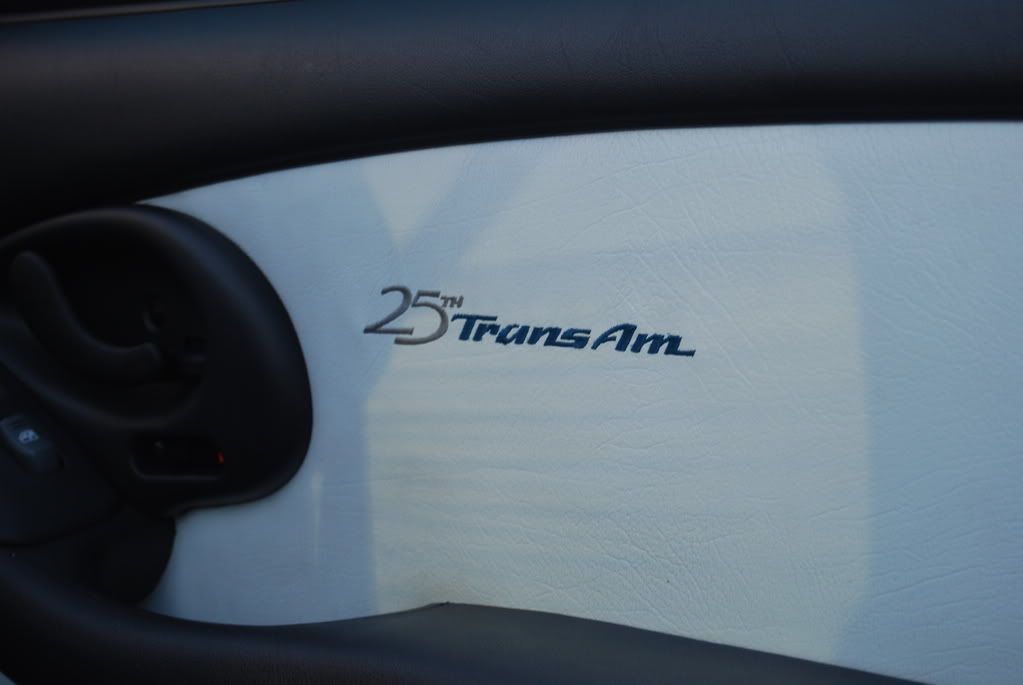
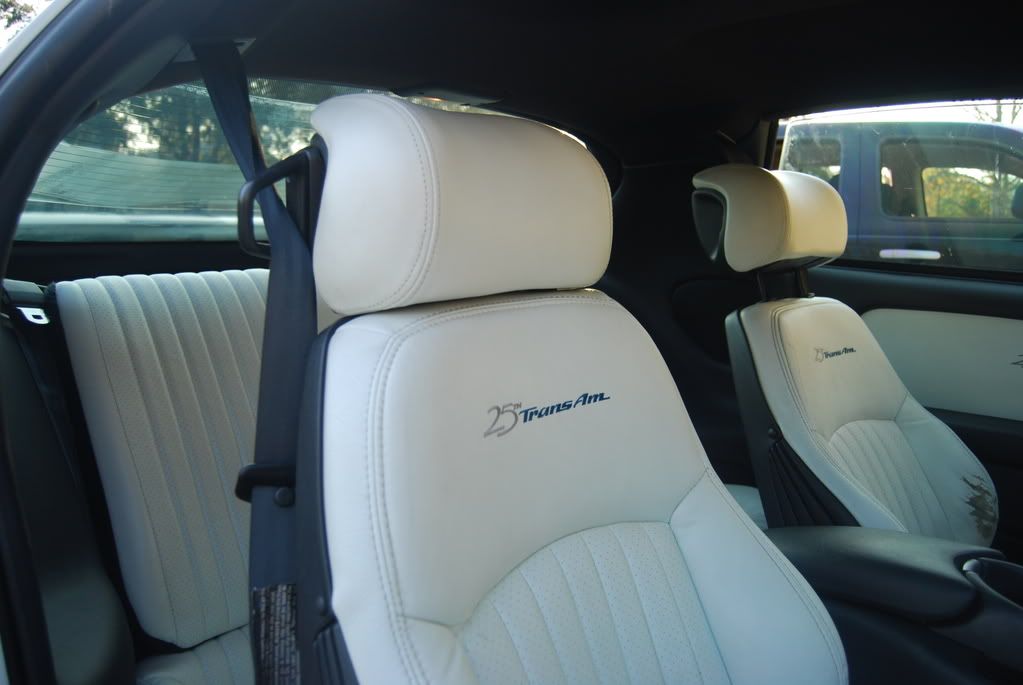
REJUVINATOR OIL - Known world wide for its ability to soften even cardboard hard leather. It is a complex blend of animal proteins, collagens, with absolutely no oil fillers of any kind. Totally unlike all other leather products, it will not stain or discolor leather. It is perfectly safe for equestrian use! Simply spray or wipe onto the surface and massage into the leather with your hands. Allow for it be absorbed into the fibers. Rejuvenator Oil has a unique capillary action which forces proteins into the leather and dirt out! Repeated use will keep leather in tip top shape. Use to condition and preserve all your leather cars, saddles, tack, furniture, motorcycle leather and even apparel. Prestine Clean is the perfect cleaner to use after each application of Rejuvenator Oil to remove the displaced impurities on the
surface of the leather.

PRESTINE CLEAN - Absolutely the best cleaner available for all fine leather. Does not contain any harsh chemicals to dry and destroy fine leathers. Contains a conditioner which cleans and conditions leather, but to a lesser extent than our Rejuvenator Oil. Use to clean leather after the application of Rejuvenator Oil has done its job and as maintenance cleaner and detailer on an as needed basis. This product is also an excellent cleaner and conditioner for vinyl and rubber. Use Prestine Clean every time you wash your car.

Leatherique is a unique (compared to what I am used to) way to not clean leather, but it also softens the feel of the hide as well as restores the softness/feel. It is a two part system that works backwards to convention. After vacuuming the leather and making sure all the grime and particle build-up is removed, the conditioner ( Rejuvenator Oil) is hand applied and massaged into the leather. The directions recommend allowing the interior to get warm (either by sitting in the sun, using a trash-bag and hairdryer, or running the car/heater) and allow the conditioner to "steam". After allowing the several hours (the longer the better), the excess conditioner and grime (that floated out of the seats) is wiped away with the cleaner (Prestine Clean). This is supposed to ensure that the hides are fully conditioned and cleaned from the inside-out.
Initial Impression- I first tried the Leatherique System because I was having a hard time getting the leather clean on a car I was preparing for the Ferrari Cavallino Concours Show in West Palm Beach, Florida. Using spray cleaners (Duragloss Leather Cleaner, Meguiars Gold Glass, Lexol Leather Clean, Zaino Z9) didn't have much cleaning ability, unless I scrubbed with a firm bristled brush. Even then this was a slow and tedious job, but more importantly I was also getting some dye transfer on the towel.
I called Brian (VASuperShine) and he had expressed that I need to try the Leatherique System (how it was gentle and floated dirt out, deeply reconditioned the seats, blah, blah..). When I next prepared the Ferrari, I had Brian along and apply the Leatherique to the interior.
Honestly, I was not expecting much. I was blow away. Not only did it remove all of the grim (easily) but it restored the original, Ferrari smell! (I should say that Leatherique is not scented like leather, and smells quite horrible). The leather was amazingly soft, and felt like butter. I was beyond impressed.
Here is a link to the detail of the said Ferrari. Brian can be seen applying leatherique about half way down (There is about 160 pictures on the thread, so it’s a long read).
The Road to Cavallino: Updated 10/21 (127 PICS) - Autopia Car Detailing Forum
Since then, I have been using leatherique faithfully and often enough to give a review and share a small write up and some tricks.
PROS: Easily and safely removes the worst of grime and grease from the hides. Restores leather better than anything I have ever used. Restores feel, smell, texture, appearance. Really does seem to work from the inside out. Relative time spent is rather small.
CONS: Long dwell time. Requires at least 6 hours (in my experience) for full cleaning. Liberal amounts are applied of the both the cleaner and conditioner, so the product cost is pretty high. Can be pretty messy.
OVERALL: Simply a mind blowing product. The cost is high and the product takes for over to work (because it works better than anything else) but I am a pro, so I can charge for this. Every time I use it, I get excited because it never fails to impress. If you are an enthusiast looking for the best, then I think I have found it. If you are a pro, then you have something to step up your game with (and charge for, of course).
Tricks:
You can wear latex gloves when applying the oil. Not only does this keep your hands clean (the conditioner is a little tacky) but it also gives you a good base when you need to add more. The product will spread and work quickly, but will thin quickly, and when the gloves "stick" to the leather, its time for more oil.
Apply both the oil and prestine clean by spraying on. This really eases the application of the oil and cleaning of it. It is much easier to apply the products with out having to pour it into your hands (and spill) and wipe it quickly. Buy some sprayers at Wal-Mart and thank me later!
Allow to dwell for as long as possible in as much heat for as long as possible. The longer the oil sits the easier it comes off. The warmer the climate inside the interior, the better the oil works and easier it comes off.
If it’s difficult to remove (it can be try the following)... Apply more prestine clean (I use the sprayer) and wipe with a clean cloth. Sometimes you have to use a lot of it. If it’s still difficult to remove, try heating the interior (pull it in the sun, turn on the engine and heater, or wipe with a hot rag). I have found the longer I can let it dwell and the warmer the interior temperature is while its dwelling have a SERIOUS impact on the ease of removal.
A quick write up.
I am working on this 1994 Trans Am 25th Anniversary. This car is rough (for those who say I am spoiled too much
When I first moved the car (the owner has left it my house for the last couple weeks as I have been busy and am working on it on spare time), I noticed how nasty the interior was, and I knew the first thing I would grab for was the leatherique. The seats where dry as cardboard and smelled funky (the mildewy old car smell).
I don't know how well the pictures came out, but the difference has been dramatic.
Here is a before of the passenger seat...


Here is the rear seat after being wiped with Prestine Clean.

Afters of the passenger seat (Leatherique was allowed to dwell for 5 hours in the sun, at about 85 degrees out).


Here are a couple half and halfs of the drivers seat..



I had noticed that while most of the dirt was removed (easily) the seats still felt a little dry and there where some spots that needed a second application. I applied the second coat of Rejuvenator Oil early the next morning and left the Trans Am in the sun the entire day. Not only are the seats and leather amazingly soft and supple, but the smell in the car (the next day) is beyond amazing. Also, all the dirt and grime came off (and out from the inside). It is truely a transformation!





